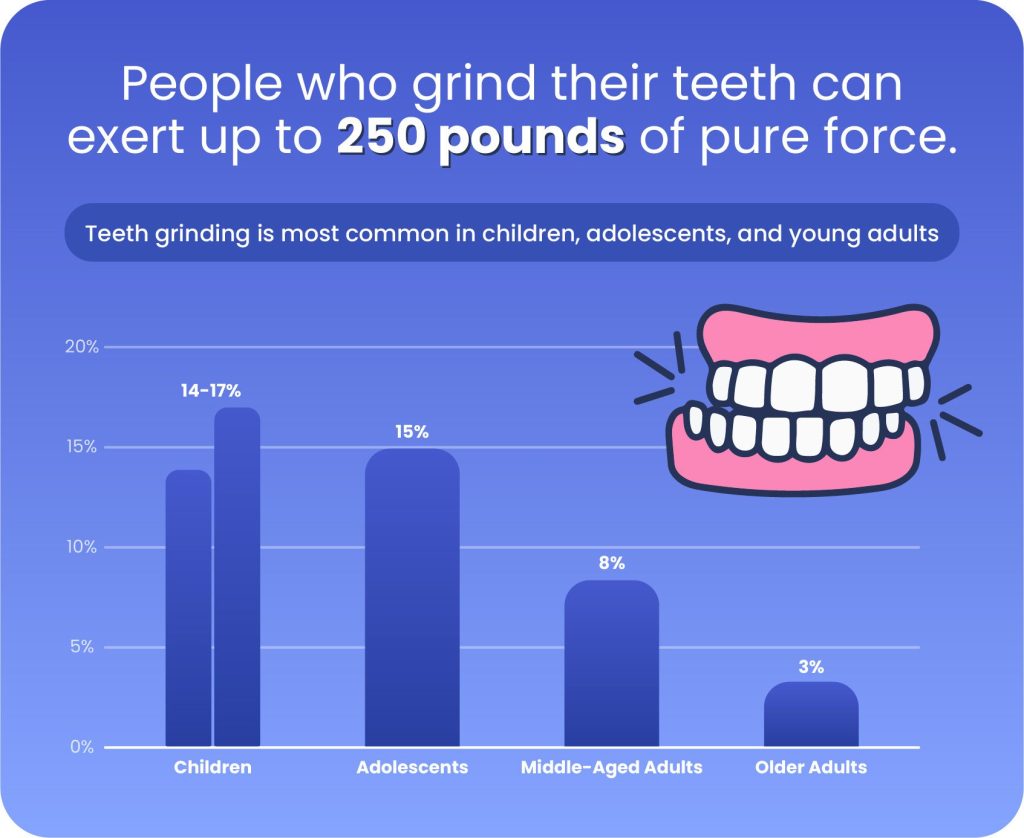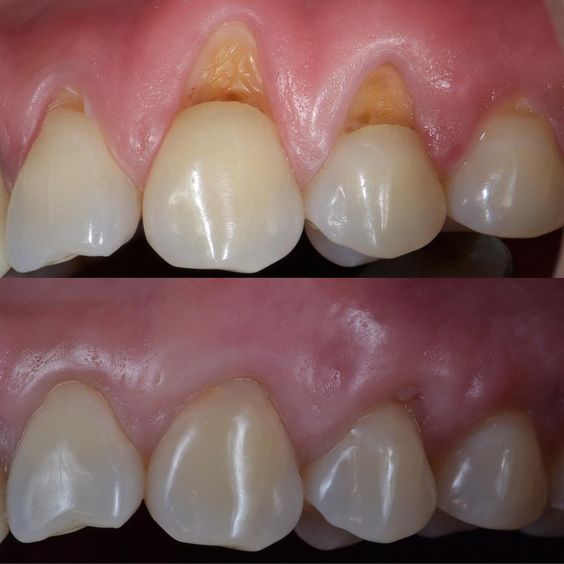Does food catch in an area just above your gumline? Is it so constant that it annoys you, as well? Or, have you wondered about that ugly yellowish-looking triangle at your gumline? You are not alone! Defects in this area (called the “cervical” portion of the tooth) are prevalent, particularly in patients over 25. While they come from several causes, fixing them is typically non-obtrusive and yields excellent results. Defects in these areas are commonly called abfractions.
Causes of the Defect
Chronic tooth clenching and grinding cause the dental enamel to flex. As it stresses and strains, the enamel around the gum line becomes weakened and erodes. The flexing is not unlike how a toothpick sags in the middle if you repeatedly bend it back and forth.

As you can see on the chart above, children have the most incidence of tooth grinding. As we age, our stresses become less, or we are more able to cope with them, and the frequency goes down. If you think you grind, clench, or brace your teeth, you may be in need of a bite guard. Ask us if there is any evidence of such wear. We can make you a custom appliance to help you with that.
Ditch the Acids and Hard toothbrushes
The second most common cause is erosion from aggressive brushing or consuming acidic foods and beverages. Finally, tooth decay also often plays a role, secondary to abfraction or erosion, as the area becomes a food/bacteria trap. Coating your teeth with highly acidic sodas, juices, wine, or coffee can erode your enamel, and then brushing with a hard bristle toothbrush complicates the situation. Use only a soft brush and gently brush your gums and teeth in a circular motion. This will alleviate the habit of “scrubbing” your teeth and possibly save you from having any defects such as the above.
Repairing the Abfraction
Fortunately, repairing these defects is usually very straightforward. The tooth will probably only need minimal modification before we place a filling. In addition, the use of bonded materials will better prevent the filling from falling out. The result is a cosmetic restoration that blends in with your natural dental enamel. And, no food trap!
Don’t Delay Treatment
As with any dental procedure, certain circumstances make these fillings challenging to place. For example, the site may be impossible to treat if the area decays before we do the preventive measure, due to access and moisture problems. Additionally, deep decay always presents a risk of irritating the nerve of the tooth, thus requiring a root canal.
Don’t wait to rid your mouth of any unappealing food traps. Call today for an appointment.


